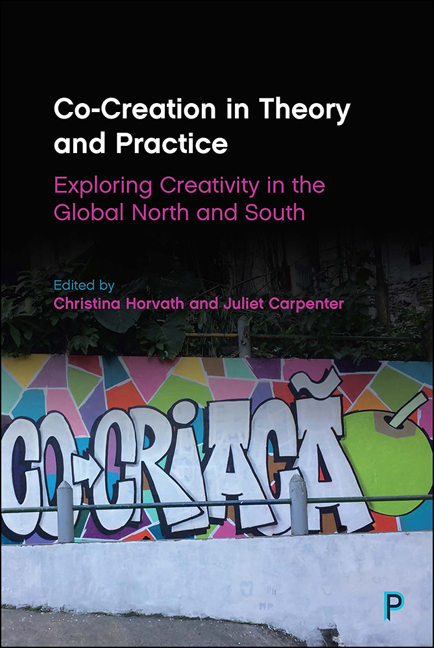7 - Does Space Matter? Built Environments and Co-Creation in Mexico City
Published online by Cambridge University Press: 18 March 2021
Summary
Introduction
This chapter seeks to understand the role of the built environment in the processes of collaborative projects associated with the concept of Co-Creation. It explores the ways in which space can be not only the product of social and cultural processes developing in a certain area, but also a place as well as a process in which marginalisation and stigmatisation occur through the morphological characteristics of the place itself. What starts as an initiative of a group of residents to improve social cohesion in their neighbourhood, for example, evolves into actions that always happen somewhere: in a square, in a park, a market, in a public building or simply in the street or within the walls of a forgotten alley. Usually, this space factor seems to be ignored by social studies; however, space matters – urban spaces and social interactions cannot be disassociated from one another.
The urban form and architectural dimensions of specific facilities will be explored over other political, organisational or financial aspects that are usually considered in sociological research. It is also important to mention the transcendence of digital platforms in the development of virtual Co-Creative projects; however, these should be studied in further research.
This text considers the authors’ experience as both academics and urban planners in Mexico City, enriched with feedback from conferences and workshops organised by the Co-Creation project. Specifically, the authors have deepened the analysis of the case study with an investigation of artistic and cultural venues in Mexico City and with semi-structured interviews with staff members of these facilities.
The approach employed considers the built environment as a useful medium to achieve the social benefits that Co-Creation promoters from the arts sphere are aiming for, through diverse participatory methodologies that are shared with urban planning practice (Miessen and Basar, 2006; Kitao, 2005). In this sense, the definition of Co-Creation here favours the process in which various agents participate to produce information and knowledge about their current situation and expectations about the built environment through the use of arts-based methods to improve their environment, rather than only being interested in producing a collective work of art as a unique goal (Gómez, 2004; Sánchez, 2008, 2015; Palacios, 2009; Bishop, 2012).
- Type
- Chapter
- Information
- Co-Creation in Theory and PracticeExploring Creativity in the Global North and South, pp. 103 - 120Publisher: Bristol University PressPrint publication year: 2020



